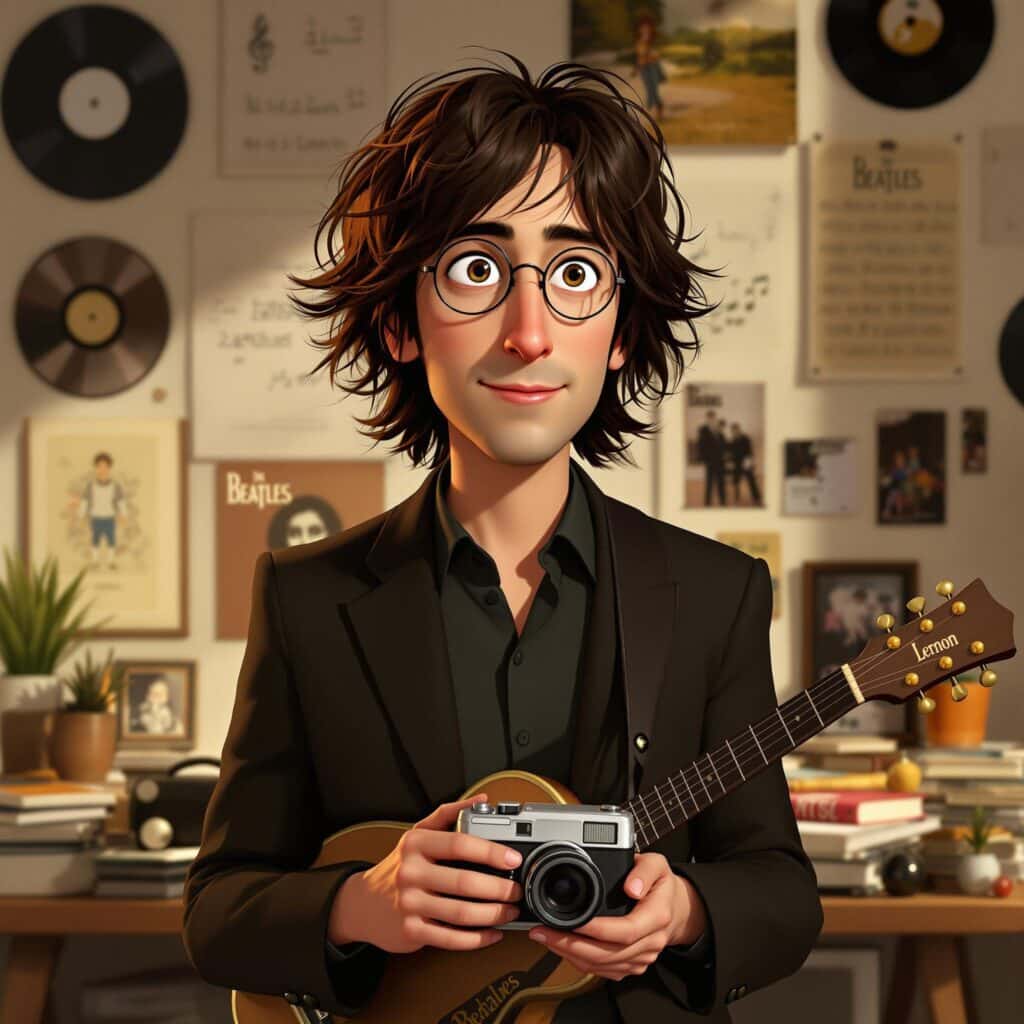Julian Lennon’s life began in the long shadow of the Beatles, but his journey has been one of forging his own identity—through music, art, and compassion. As the first son of John Lennon and Cynthia Powell, Julian’s childhood was marked by both the magic and the turmoil of Beatlemania. Over the decades, he has emerged as a respected artist in his own right, celebrated for his evocative songwriting, acclaimed photography, and deep commitment to humanitarian work.
Early Life: Born into Beatlemania
Julian Charles John Lennon was born on April 8, 1963, in Liverpool, England. His arrival coincided with the Beatles’ meteoric rise, and his early years were spent in a whirlwind of fame, music, and media attention. His parents, John and Cynthia, tried to shield him from the intensity, but the pressures of celebrity life inevitably seeped in.
Julian’s earliest memories are filled with music—his father playing guitar, the Beatles rehearsing, and the constant hum of creativity. Yet, his childhood was also marked by absence, as John’s commitments to the band often kept him away from home. The eventual separation and divorce of his parents in 1968 was a painful turning point, leaving Julian and Cynthia to build a new life together.
Inspiration for Beatles Classics
Though only a child, Julian’s presence inspired some of the Beatles’ most beloved songs. Most famously, “Hey Jude” was written by Paul McCartney to comfort Julian during his parents’ divorce (originally titled “Hey Jules”). The song’s message of hope and resilience became an anthem for millions and a testament to the close bond between Julian and Paul.
Julian also inspired “Lucy in the Sky with Diamonds,” after he brought home a drawing of his classmate Lucy O’Donnell, which sparked John’s psychedelic masterpiece. These connections to Beatles lore would follow Julian throughout his life, sometimes as a blessing, sometimes as a burden.
Finding His Own Voice: The Solo Music Career
As a teenager, Julian was drawn to music, displaying a natural talent for piano, guitar, and songwriting. He attended boarding school in North Wales, where he began composing and performing his own material. Despite his famous surname, Julian was determined to find his own voice.
In 1984, Julian released his debut album, Valotte. The record was a critical and commercial success, with the title track and “Too Late for Goodbyes” earning Grammy nominations and international acclaim. Critics noted the uncanny similarity between Julian’s voice and his father’s, but also praised his melodic sensibility and emotional honesty.
Julian’s early success was both a blessing and a challenge. He was often compared to John, and the weight of expectation was immense. Nevertheless, he continued to release albums throughout the 1980s and 1990s, including The Secret Value of Daydreaming, Mr. Jordan, and Help Yourself. His songwriting matured, exploring themes of love, loss, and self-discovery.
Artistic Expansion: Photography and Visual Art
In the 2000s, Julian began to focus more on photography and visual art. He developed a distinctive style, blending documentary realism with poetic composition. His work has been exhibited internationally, earning praise for its sensitivity and depth.
Julian’s photography often centers on themes of travel, nature, and humanity. He has captured portraits of celebrities, landscapes from remote corners of the world, and moments of quiet beauty. His books, such as “Timeless: Photographs of Julian Lennon,” showcase his evolving vision and commitment to artistic exploration.
Humanitarian Work: The White Feather Foundation
Inspired by a promise from his father—who told him that if he passed away, he would send a white feather as a sign—Julian founded The White Feather Foundation in 2007. The organization supports environmental, humanitarian, and educational projects around the world, reflecting Julian’s deep sense of social responsibility.
Through the foundation, Julian has championed clean water initiatives, indigenous rights, and disaster relief efforts. He has also written children’s books, including the best-selling “Touch the Earth” series, which teach young readers about environmental stewardship.
Relationship with the Beatles Legacy
Julian’s relationship with his father’s legacy has been complex. While proud of John Lennon’s achievements, Julian has sometimes struggled with the public’s tendency to view him only through the lens of the Beatles. He has spoken candidly about the challenges of growing up in the public eye and the emotional distance between him and his father.
Nevertheless, Julian has honored the Beatles’ legacy through his music, art, and charitable work. He maintains a close relationship with Paul McCartney, who has been a mentor and friend since childhood, and he has participated in tributes and documentaries celebrating the band’s influence.
Later Life and Ongoing Influence
In recent years, Julian has continued to release music—his 2011 album Everything Changes and singles like “Freedom” and “Lucky” have been praised for their introspective lyrics and lush production. He remains active as a photographer, author, and philanthropist, balancing creativity with a commitment to making the world a better place.
Julian’s story is one of resilience and reinvention. He has transformed the weight of his heritage into a source of inspiration, using his platform to advocate for art, compassion, and global change.
Legacy: The Artistic Heir
Julian Lennon stands as a bridge between generations—a living link to the Beatles’ past and a creative force for the future. He has forged his own identity through talent, perseverance, and heart, reminding us that the greatest legacy is not fame, but the courage to be true to oneself.
